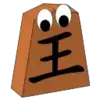Ever wanted to know the color of each square on the chessboard? Here’s a simple and efficient way:
(NOTE: none of the images shown are to be memorized, they serve only as visual helpers)
The method is quite simple: just associate each letter: A; B; C; D; E; F; G; H to its corresponding number, based on their alphabetical order, so:
• A = 1; B = 2; C = 3; D = 4; E = 5; F = 6; G = 7; H = 8
After doing so, the following image should make some sense:

You can see that the square a1 is “1+1” in the image, and, for example, e7 is “5+7”. The first number corresponds to the letter and the second is just the same as in the normal algebraic notation.
Now just ADD the two numbers:

You will notice that all the EVEN numbers fall on DARK squares and all the ODD numbers fall on LIGHT squares.
I know I said NO memorization, but actually this is the only thing to memorize: Even = Dark Squares and Odd = Light Squares.
So next time someone asks you the color of, for example, f6 just think 6+6 = 12, which is EVEN number so f6 is a DARK square.
Hope you enjoyed!
(NOTE: none of the images shown are to be memorized, they serve only as visual helpers)
The method is quite simple: just associate each letter: A; B; C; D; E; F; G; H to its corresponding number, based on their alphabetical order, so:
• A = 1; B = 2; C = 3; D = 4; E = 5; F = 6; G = 7; H = 8
After doing so, the following image should make some sense:

You can see that the square a1 is “1+1” in the image, and, for example, e7 is “5+7”. The first number corresponds to the letter and the second is just the same as in the normal algebraic notation.
Now just ADD the two numbers:

You will notice that all the EVEN numbers fall on DARK squares and all the ODD numbers fall on LIGHT squares.
I know I said NO memorization, but actually this is the only thing to memorize: Even = Dark Squares and Odd = Light Squares.
So next time someone asks you the color of, for example, f6 just think 6+6 = 12, which is EVEN number so f6 is a DARK square.
Hope you enjoyed!



